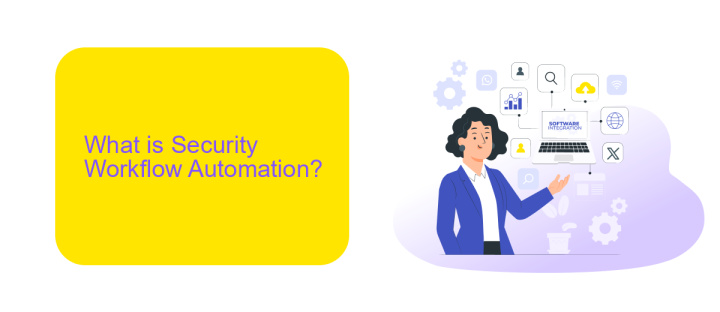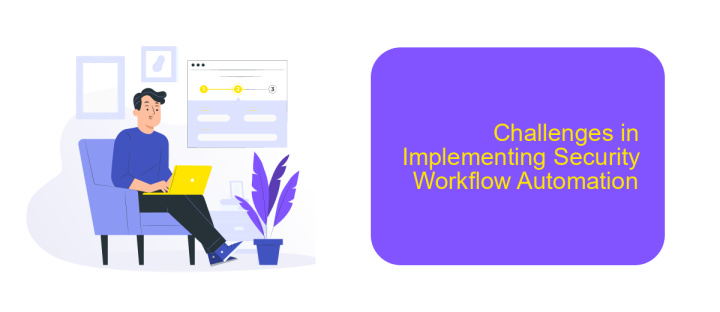Security Workflow Automation
In an era where cyber threats are increasingly sophisticated, Security Workflow Automation (SWA) emerges as a critical solution for modern enterprises. SWA streamlines and automates security processes, reducing human error and enhancing response times. By integrating advanced technologies, organizations can proactively defend against vulnerabilities, ensuring a robust security posture. This article explores the key benefits and implementation strategies of SWA.
Introduction
In today's rapidly evolving digital landscape, security workflow automation has become a critical component for organizations seeking to enhance their cybersecurity posture. By automating repetitive and time-consuming tasks, businesses can not only improve efficiency but also reduce the risk of human error, which is often a significant vulnerability in security protocols.
- Streamlining incident response processes
- Enhancing threat detection and mitigation
- Integrating with various security tools and platforms
- Reducing manual intervention and operational costs
One of the key enablers of effective security workflow automation is the integration of various security tools and services. Platforms like ApiX-Drive facilitate seamless integrations, allowing organizations to connect their existing security systems without extensive coding or manual effort. This ensures that security workflows are not only automated but also synchronized across different tools, providing a holistic approach to cybersecurity management.
What is Security Workflow Automation?

Security Workflow Automation refers to the process of automating security-related tasks and procedures within an organization to enhance efficiency, accuracy, and response times. By leveraging advanced technologies, such as machine learning and artificial intelligence, security workflow automation aims to reduce human error, streamline operations, and ensure consistent enforcement of security policies. This approach allows security teams to focus on more strategic tasks by automating repetitive and time-consuming activities, such as threat detection, incident response, and compliance monitoring.
Integrating various security tools and platforms is a crucial aspect of security workflow automation. Services like ApiX-Drive facilitate seamless integration by enabling the connection of different applications and systems without the need for coding. ApiX-Drive helps organizations to automate data transfer between security tools, ensuring that information flows smoothly and securely across the entire security infrastructure. This integration capability not only enhances the overall efficiency of security operations but also ensures that critical security data is readily available for analysis and decision-making.
Benefits of Security Workflow Automation

Implementing security workflow automation can significantly enhance an organization's security posture by streamlining and automating repetitive tasks. This leads to increased efficiency and allows security teams to focus on more complex and critical issues.
- Improved Efficiency: Automation reduces the time and effort required to perform routine security tasks, such as monitoring and incident response.
- Consistency and Accuracy: Automated processes ensure that security protocols are applied consistently, minimizing human error.
- Scalability: Automation enables organizations to scale their security operations without a proportional increase in resources.
- Cost Savings: By reducing manual labor, organizations can lower operational costs and allocate resources more effectively.
- Enhanced Integration: Tools like ApiX-Drive facilitate seamless integration between various security systems, improving overall workflow.
Incorporating security workflow automation not only boosts operational efficiency but also enhances the overall security framework. By leveraging services like ApiX-Drive, organizations can integrate their systems effortlessly, ensuring a more robust and cohesive security strategy.
Challenges in Implementing Security Workflow Automation

Implementing security workflow automation presents several challenges that organizations must address to ensure a seamless and effective process. One of the primary obstacles is the complexity of integrating various security tools and platforms, which often have different protocols and data formats. This can make it difficult to achieve a unified and cohesive security system.
Another significant challenge is the potential for false positives and negatives, which can arise from automated systems. These inaccuracies can lead to either unnecessary alerts that overwhelm security teams or missed threats that leave the organization vulnerable. Additionally, the initial setup and configuration of automated workflows require substantial time and resources, often necessitating specialized knowledge and expertise.
- Integration difficulties with disparate security tools
- Risk of false positives and negatives
- High initial setup and configuration costs
- Need for specialized knowledge and expertise
Services like ApiX-Drive can help mitigate some of these challenges by providing seamless integration solutions that connect various security tools and platforms. By automating data transfer and synchronization, ApiX-Drive reduces the complexity and time required for setup, allowing organizations to focus on optimizing their security workflows. However, it is crucial to continuously monitor and adjust these automated systems to maintain their effectiveness and reliability.
Best Practices for Implementing Security Workflow Automation
Implementing security workflow automation requires a careful approach to ensure both efficiency and effectiveness. Start by clearly defining your security requirements and objectives. This involves identifying the critical assets that need protection and understanding the specific threats they face. Once you have a clear picture, design workflows that are tailored to address these needs, ensuring that each step in the process is both necessary and optimized for speed and accuracy.
Integration is a key component of successful security workflow automation. Utilize tools like ApiX-Drive to seamlessly connect different security platforms and services, enabling smooth data flow and real-time response. It's essential to regularly review and update your automated workflows to adapt to evolving threats and organizational changes. Additionally, always incorporate robust monitoring and alerting mechanisms to quickly identify and respond to any anomalies or breaches. By following these best practices, you can create a resilient and adaptive security automation framework.


FAQ
What is Security Workflow Automation?
How can Security Workflow Automation improve incident response?
What are the key benefits of implementing Security Workflow Automation?
How do I integrate Security Workflow Automation into my existing security infrastructure?
What are some common use cases for Security Workflow Automation?
Apix-Drive will help optimize business processes, save you from a lot of routine tasks and unnecessary costs for automation, attracting additional specialists. Try setting up a free test connection with ApiX-Drive and see for yourself. Now you have to think about where to invest the freed time and money!

